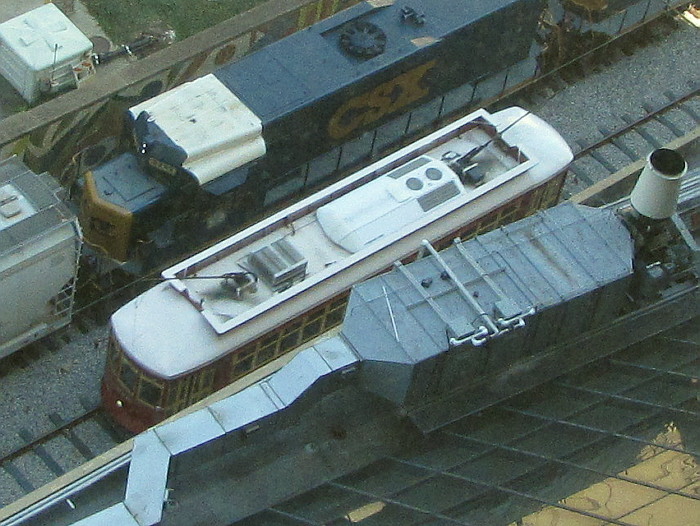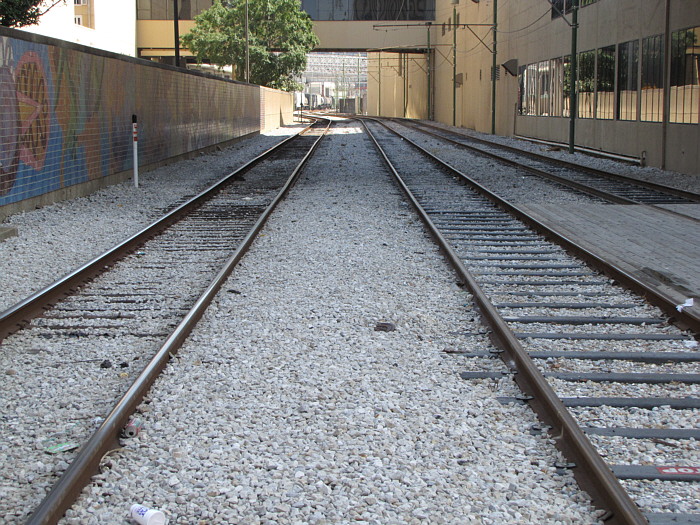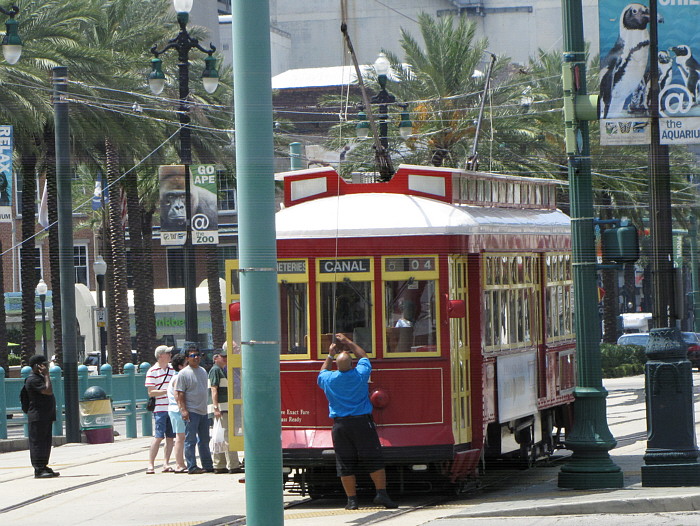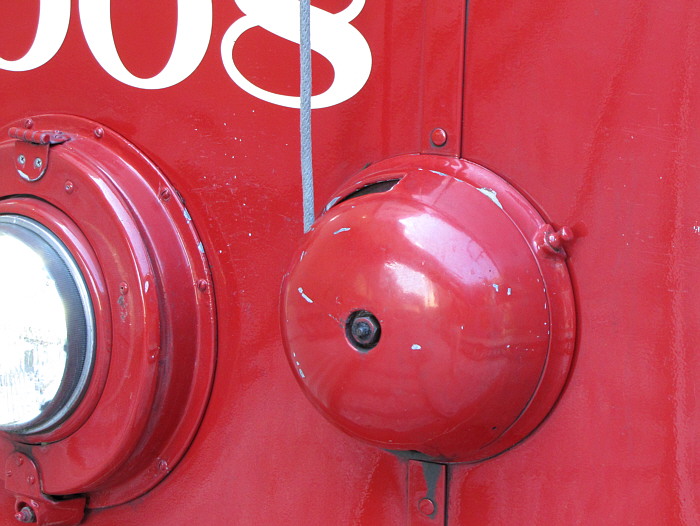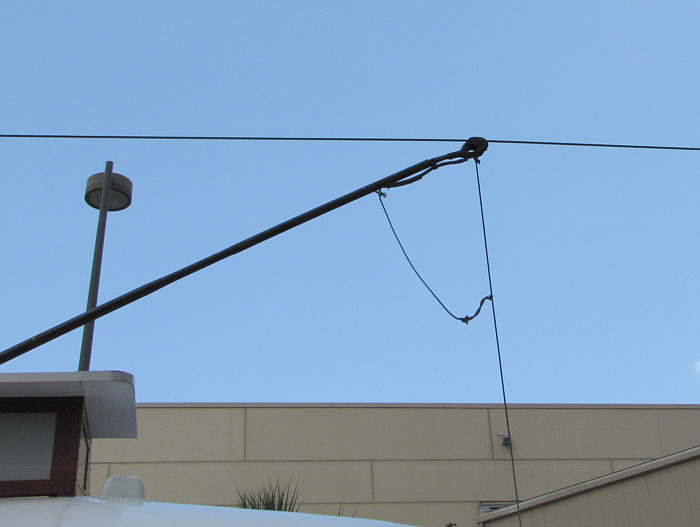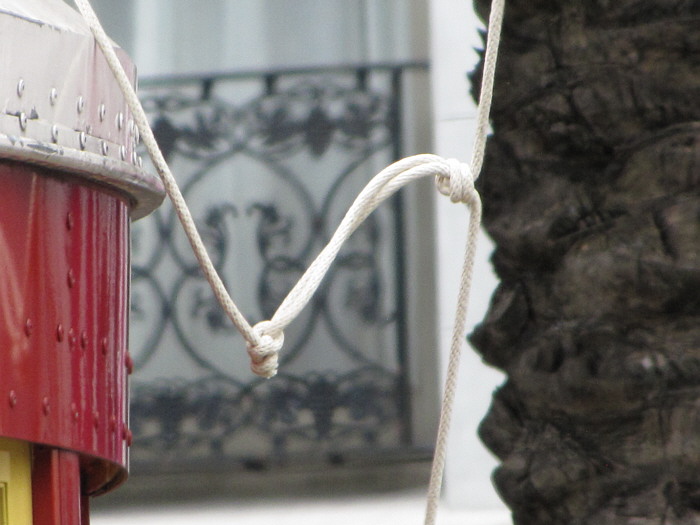Doug Kerr
Well-known member
Electric streetcar service in New Orleans, Louisiana, USA has a long and proud history. The St. Charles streetcar line is said to be the oldest continuously operating street railway system in the world (service was interrupted for a while during the inundation of much of New Orleans in the wake of hurricane Katrina in 2005).
As buses (and in some cities, but not New Orleans, trolley buses) displaced electric streetcar systems in most of the US, preservationists were able to have the St. Charles line kept in service. It was for a while the sole surviving streetcar line in New Orleans.
In 1988, the New Orleans Regional Transit Authority (RTA) established a new streetcar line running along the riverfront of the Mississippi River (the Riverfront line). In 2004, the Canal Street streetcar line was revived,
Here we see a car of the St. Charles line sporting its traditional olive green livery. It is westbound on St. Charles Street (it becomes St. Charles Avenue as it heads into the suburbs), about to cross Natchez Street.
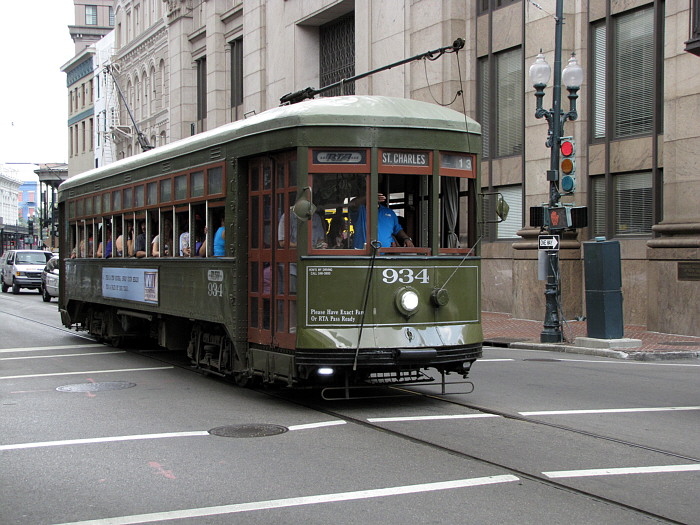
Douglas A. Kerr: St. Charles streetcar, New Orleans
Most of the St. Charles cars themselves survived the Katrina inundation. Many of the newer cars on the other lines, stored in a different area, were destroyed and had to be replaced.
The Riverfront line runs in a right of way adjacent to the Mississippi River floodwall also accommodating one railway track (used mostly only at night).
Here we see two ladies from the International Convention of the Red Hat Society boarding an upriver (northbound) Riverfront car at the Poydras Street stop (near the Hilton New Orleans Riverside Hotel).
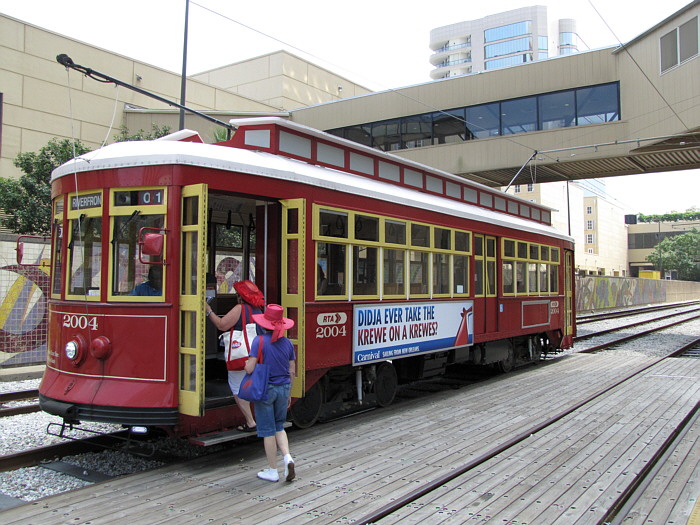
Douglas A. Kerr: Riverfront streetcar, New Orleans
This is one of the new cars acquired after the Katrina inundation.
The clerestory (pronounced "clear story") roof (with the simulated windows) is wholly bogus - an attempt to call up older car design (ugh!). But it hides the air conditioning unit. The actual roofs of that type were intended to admit more light into the cars.
The reference to "krewe"/"krewes" on the advertising placard for a cruise line is a pun on krewe, the name for the traditional societies that sponsor floats and parties in the annual New Orleans Mardi Gras celebration ("Carnival").
Here we see a car at the "downriver" terminus of the Canal Street line. The motorman shows some of the fabled N'awlins hospitality to a passenger, an attendee at the Red Hat convention:
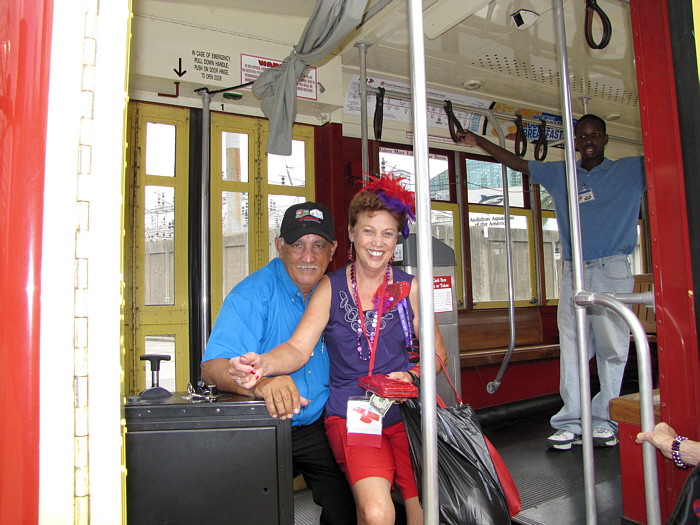
Douglas A. Kerr: Canal Street streetcar, New Orleans
To the right we see the what I think may be an apprentice conductor.
The track gauge of all the New Orleans streetcar lines is 5 ft 2-1/2 inches (1588 mm). This is 6 inches wider than standard railway gauge (4 ft 8-1/2 inches, 1435 mm). This is in fact a fairly common street railway gauge. Folklore has it that the use of gauges differing from standard railway gauge was in part a protection against a potential lust by railway operators to take over street railway companies to use their trackage to extend rail lines into city industrial areas.
Best regards,
Doug
As buses (and in some cities, but not New Orleans, trolley buses) displaced electric streetcar systems in most of the US, preservationists were able to have the St. Charles line kept in service. It was for a while the sole surviving streetcar line in New Orleans.
In 1988, the New Orleans Regional Transit Authority (RTA) established a new streetcar line running along the riverfront of the Mississippi River (the Riverfront line). In 2004, the Canal Street streetcar line was revived,
Here we see a car of the St. Charles line sporting its traditional olive green livery. It is westbound on St. Charles Street (it becomes St. Charles Avenue as it heads into the suburbs), about to cross Natchez Street.

Douglas A. Kerr: St. Charles streetcar, New Orleans
Most of the St. Charles cars themselves survived the Katrina inundation. Many of the newer cars on the other lines, stored in a different area, were destroyed and had to be replaced.
The Riverfront line runs in a right of way adjacent to the Mississippi River floodwall also accommodating one railway track (used mostly only at night).
Here we see two ladies from the International Convention of the Red Hat Society boarding an upriver (northbound) Riverfront car at the Poydras Street stop (near the Hilton New Orleans Riverside Hotel).

Douglas A. Kerr: Riverfront streetcar, New Orleans
This is one of the new cars acquired after the Katrina inundation.
The clerestory (pronounced "clear story") roof (with the simulated windows) is wholly bogus - an attempt to call up older car design (ugh!). But it hides the air conditioning unit. The actual roofs of that type were intended to admit more light into the cars.
The reference to "krewe"/"krewes" on the advertising placard for a cruise line is a pun on krewe, the name for the traditional societies that sponsor floats and parties in the annual New Orleans Mardi Gras celebration ("Carnival").
Here we see a car at the "downriver" terminus of the Canal Street line. The motorman shows some of the fabled N'awlins hospitality to a passenger, an attendee at the Red Hat convention:

Douglas A. Kerr: Canal Street streetcar, New Orleans
To the right we see the what I think may be an apprentice conductor.
The track gauge of all the New Orleans streetcar lines is 5 ft 2-1/2 inches (1588 mm). This is 6 inches wider than standard railway gauge (4 ft 8-1/2 inches, 1435 mm). This is in fact a fairly common street railway gauge. Folklore has it that the use of gauges differing from standard railway gauge was in part a protection against a potential lust by railway operators to take over street railway companies to use their trackage to extend rail lines into city industrial areas.
Best regards,
Doug

